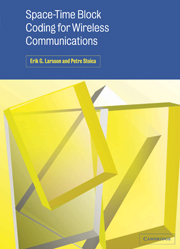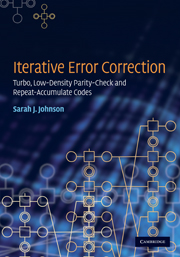Space-Time Coding
This book covers the fundamental principles of space-time coding for wireless communications over multiple-input multiple-output (MIMO) channels, and sets out practical coding methods for achieving the performance improvements predicted by the theory. The theory and practice sections can be used independently of each other. Written by one of the inventors of space-time block coding, this volume is ideal for a graduate student familiar with the basics of digital communications, and for engineers implementing the theory in real systems.
- Theory and practice sections can be used independently of each other
- Written by a co-inventor of space-time block coding
Product details
February 2010Paperback
9780521131407
320 pages
244 × 170 × 17 mm
0.51kg
Available
Table of Contents
- Preface
- Standard notation
- Space-time coding notation
- Abbreviations
- 1. Introduction
- 2. Capacity of multiple-input multiple-output channels
- 3. Space-time code design criteria
- 4. Orthogonal space-time block codes
- 5. Quasi-orthogonal space-time block codes
- 6. Space-time trellis codes
- 7. Super-orthogonal space-time trellis codes
- 8. Differential space-time modulation
- 9. Spatial multiplexing and receiver design
- 10. Non-orthogonal space-time block codes
- 11. Additional topics in space-time coding
- Bibliography.





